Affiliate links on Android Authority may earn us a commission. Learn more.
Xiaomi Mi 8 Pro vs POCOphone F1: Which is better value?
Published onJanuary 13, 2019
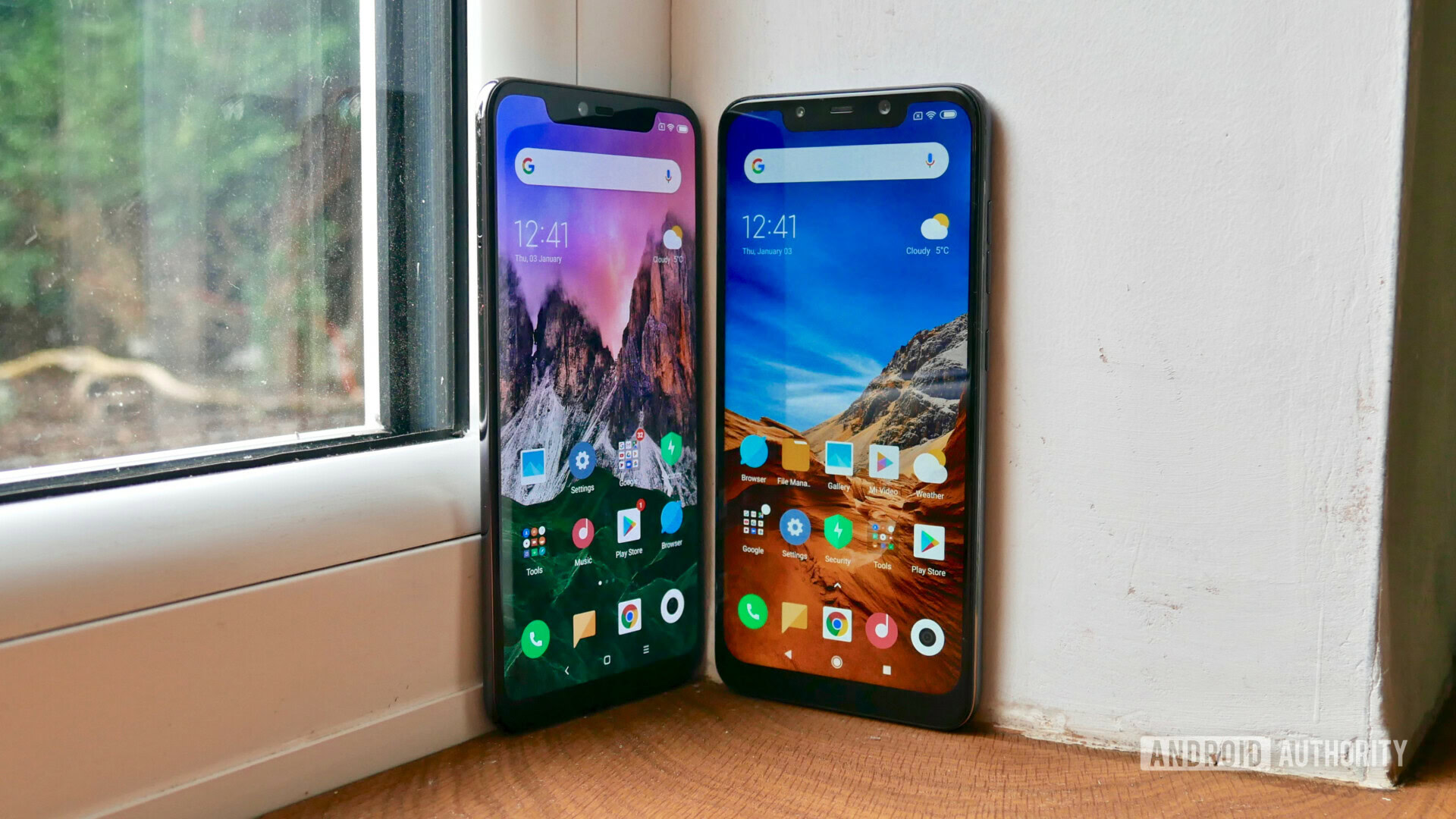
Xiaomi has spent much of 2018 waging war on the smartphone industry’s elite on multiple fronts. From entry-level bargains to multi-camera mid-rangers to high-concept, experimental flagships, Xiaomi’s product family is stacked full of options for almost every type of buyer.
While the Mi Mix 3 sits proudly atop the pile, there’s a bit more competition when it comes to the mantle of Xiaomi’s best affordable flagship.
Traditionally, we’ve seen the best of Xiaomi’s numbered Mi series — most recently the Mi 8 Pro — deliver killer specs on a modest budget, but now the company’s offshoot POCOphone brand is taking that ethos even further with its debut handset, the Pocophone F1, which undercuts the Mi 8 Pro by almost 300 euros.
But is the POCOphone F1 truly better value for money than Xiaomi’s own flagship killer? Let’s find out by pitting them against each other in this Xiaomi Mi 8 Pro vs POCOphone F1 head-to-head.
Xiaomi Mi 8 Pro vs POCOphone F1: Design
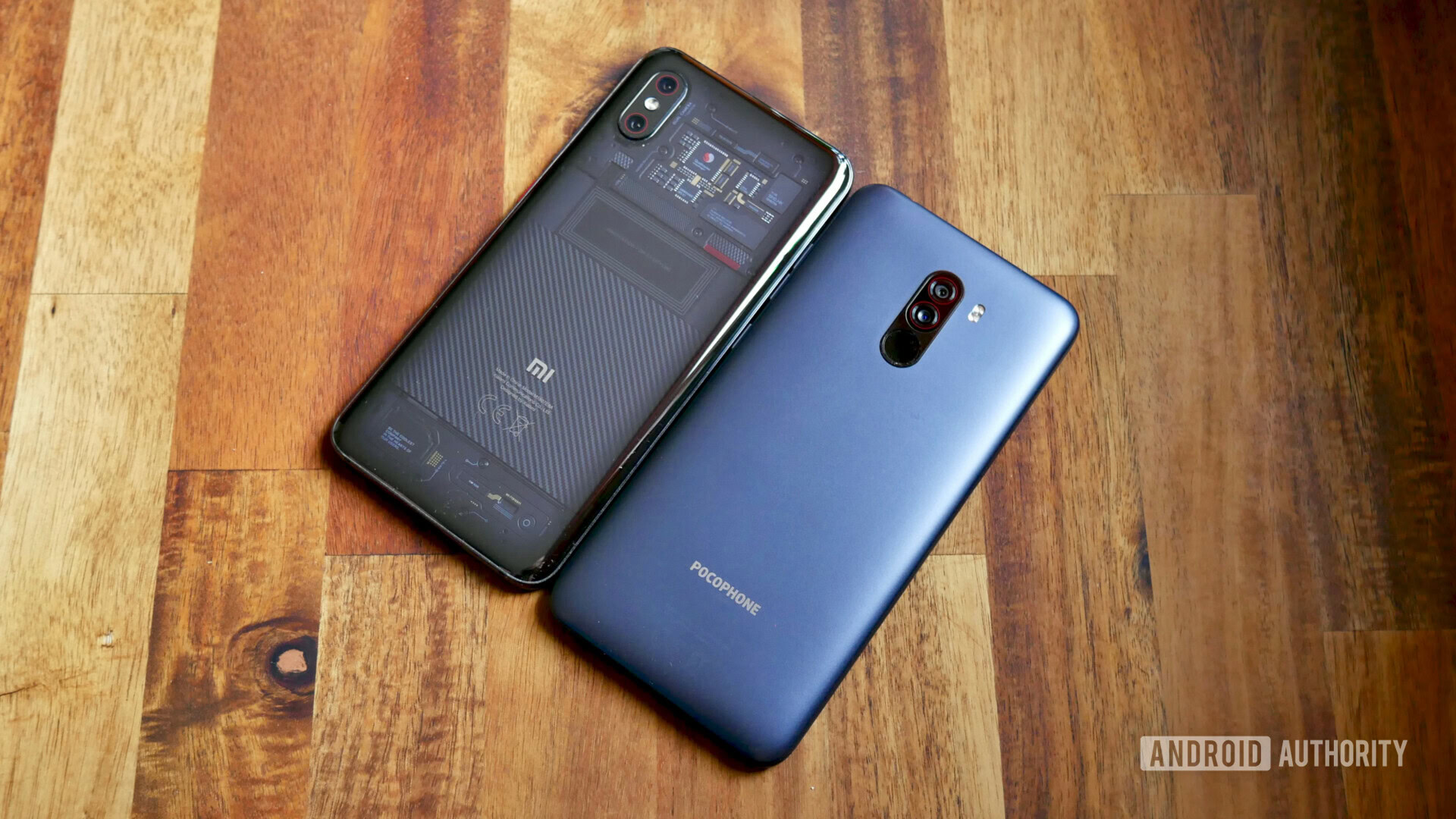
There are plenty of areas where the POCOphone F1 can match the Mi 8 Pro (a.k.a. the Mi 8 Explorer Edition), but design absolutely isn’t one of them.
In European markets, the Mi 8 Pro is only available in Transparent Titanium. It sports a see-through glass rear panel surrounded by a smokey aluminium frame and funky red accents on the power button, USB-C port, and the camera module.
The components underneath may be mostly fake, the inspirational messages underneath can be a bit nauseating, and the overall design — like the regular Mi 8 — takes more than a few cues from Apple, but the Mi 8 Pro is one of the more distinct ‘iPhone clones’ on the market.
The POCOphone F1, meanwhile, looks like every other smartphone slab of the past few years and feels ‘cheap’ due to its polycarbonate back. The POCOphone F1 also sports red circles around the rear camera lenses, but otherwise you’re getting either a plain black or blue phone with zero flair or personality. There are slightly more exciting red and “Armored Edition” variants too, but these are only available in selected regions.
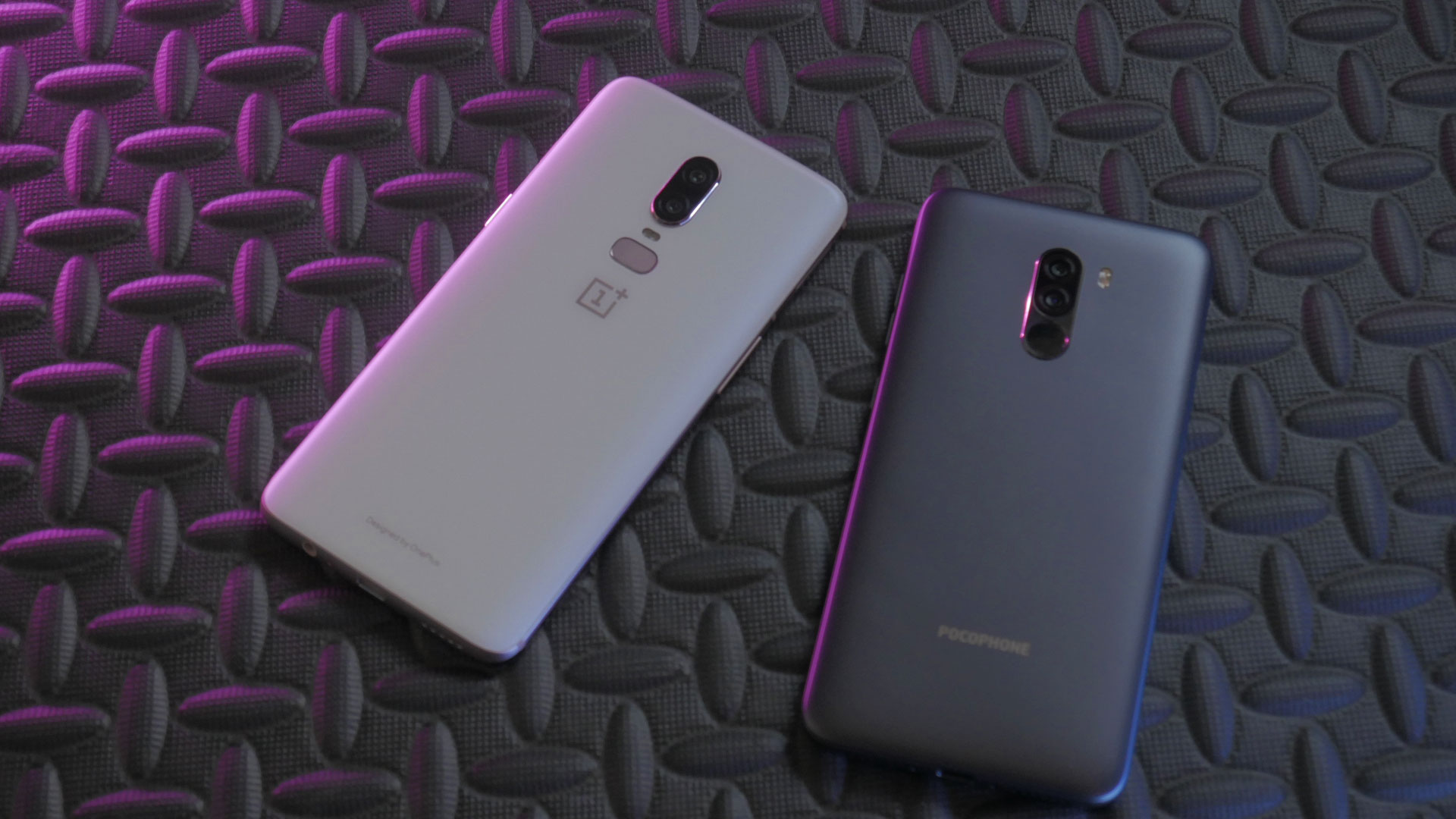
It’s also much thicker (8.8mm vs 7.6mm) and slightly heavier (182g vs 177g) than the Mi 8 Pro. The added heft is immediately noticeable and using the POCOphone F1 in one hand isn’t the most comfortable experience.
Despite being almost the same width, the more pronounced curvature of the rear glass panel on the Mi 8 Pro means you won’t encounter the same difficulty stretching your thumb across the display to tap a notification.
Xiaomi Mi 8 Pro vs POCOphone F1: Display
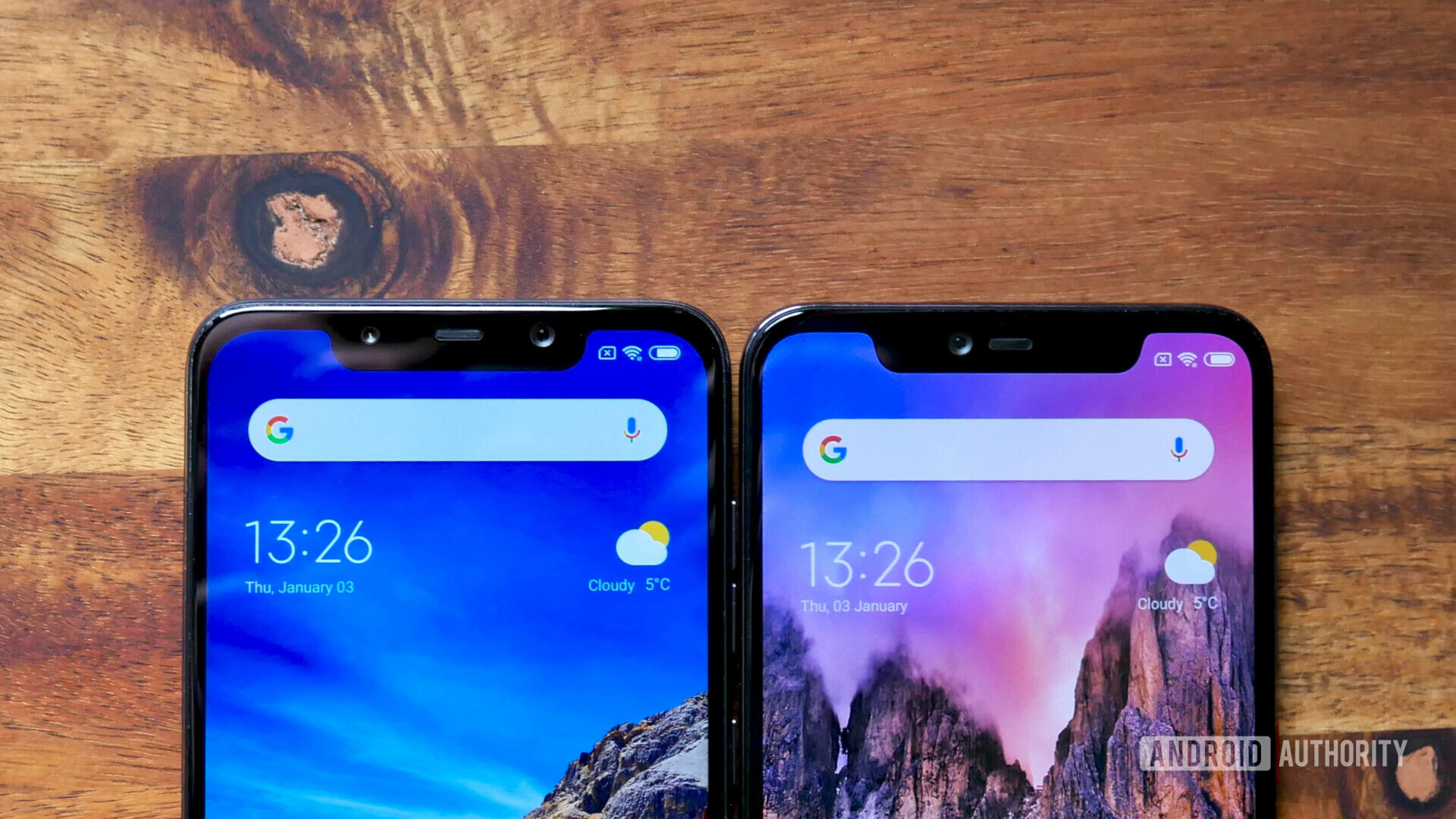
The POCOphone F1 and Mi 8 Pro have almost identical display resolutions, coming in at 1,080 x 2,246 (403 ppi) and 1,080 x 2,248 (402 ppi), respectively. However, the Mi 8 Pro’s 6.21-inch AMOLED display easily wins out in every other category against the POCOphone F1’s 6.18-inch LCD panel.
Xiaomi phones tend to favor colder color temperatures, but everything looks richer and more vibrant on the Mi 8 Pro and the blacks are far deeper. The Mi 8 Pro also supports HDR and is built from Gorilla Glass 5. The POCOphone F1, on the other hand, is Gorilla Glass 3.
Read more: Move over, notch: 2019 will be the year of display hole cameras
Both phones also have sizeable notches and, compared to other handsets with cutouts, relatively large bezels and chins. This can be justified on the Mi 8 Pro as Xiaomi has jam-packed the notch with a bunch of additional sensors, but the POCOphone F1’s notch is mostly full of dead space.
Xiaomi Mi 8 Pro vs POCOphone F1: Performance
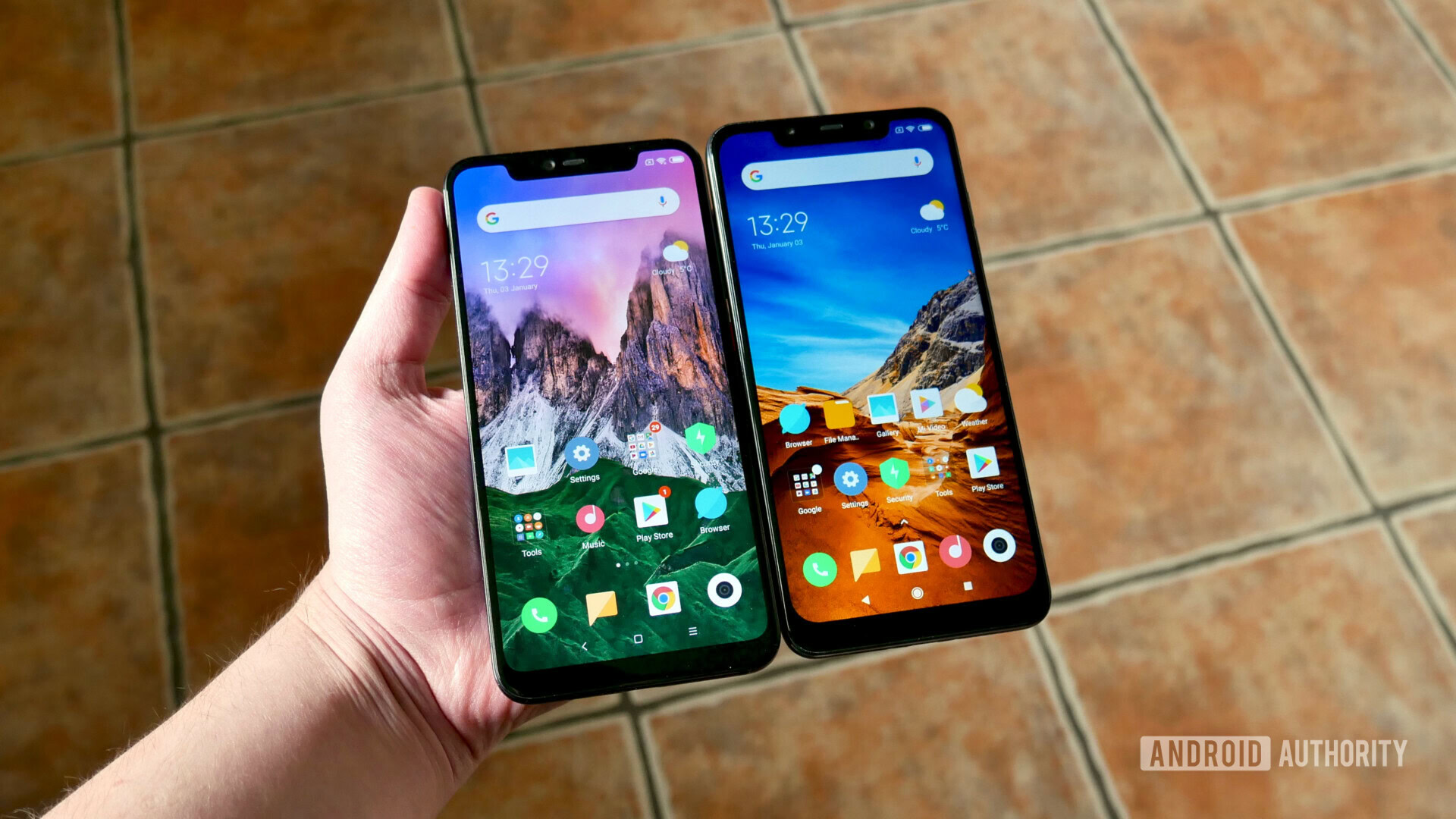
At this point you might be thinking that the rather large price gap between the POCOphone F1 and the Mi 8 Pro is completely understandable. You might even be wondering why these two phones are even in the same ballpark for a head-to-head.
The reason is performance.
The global Xiaomi Mi 8 Pro variant is powered by Qualcomm’s Snapdragon 845 SoC (4 cores x 2.8GHz and 4 cores x 1.8GHz) backed by an Adreno 630 GPU and 8GB of RAM. The POCOphone F1, which is priced at almost half that of the Mi 8 Pro, has the exact same SoC and GPU, but drops the RAM count to 6GB for the global version (8GB RAM variants are available in selected markets).
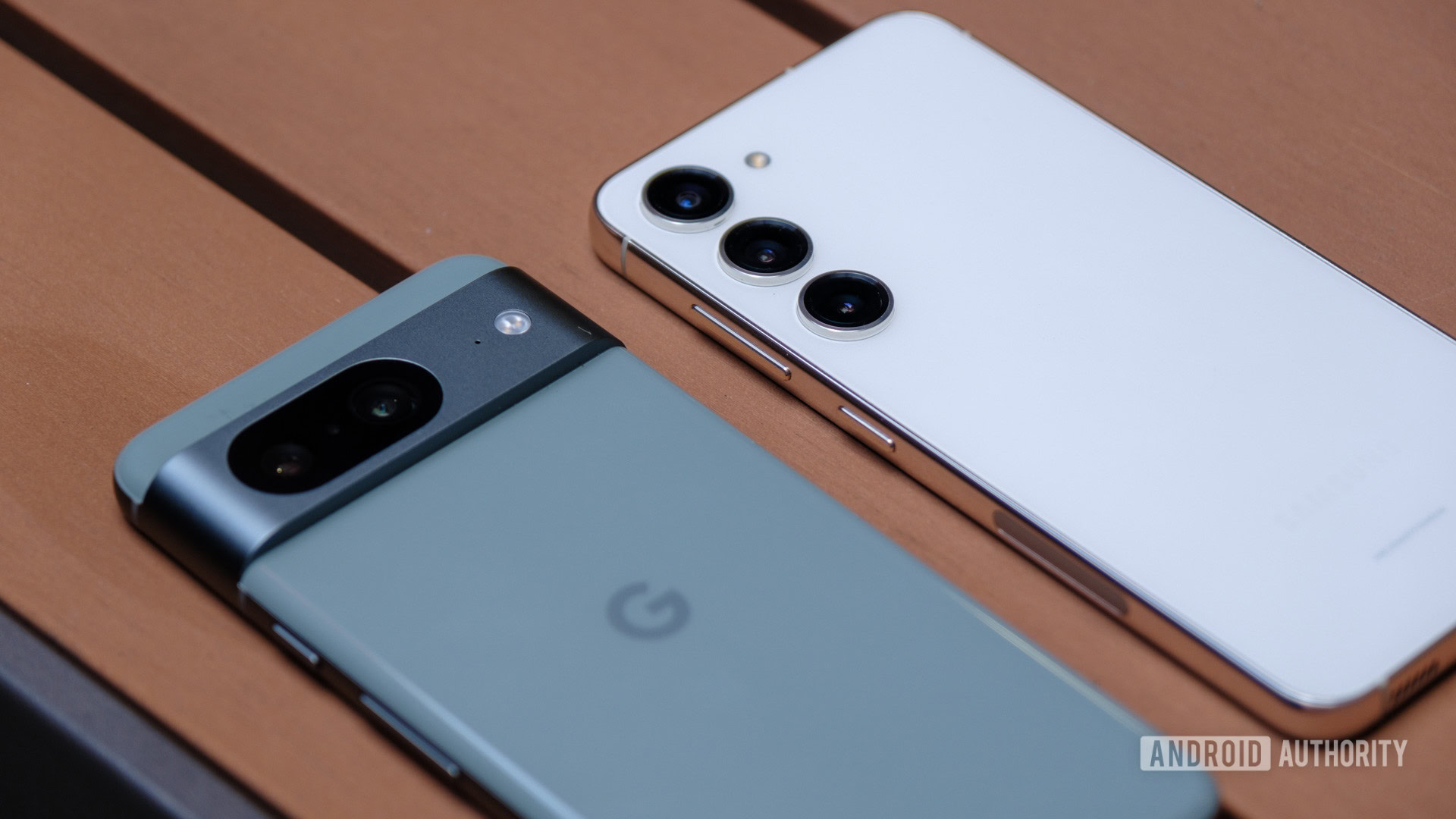
In general use, both phones perform incredibly well with almost zero lag and multitasking is a breeze. Graphics-intensive games also run equally well on either phone.
While empirical evidence is far more reliable when it comes to measuring smartphone performance, below are the Geekbench, 3DMark, and Antutu benchmark results for the POCOphone F1 and Mi 8 Pro:
Geekbench
3DMark
Antutu
Xiaomi Mi 8 Pro vs POCOphone F1: Hardware and features
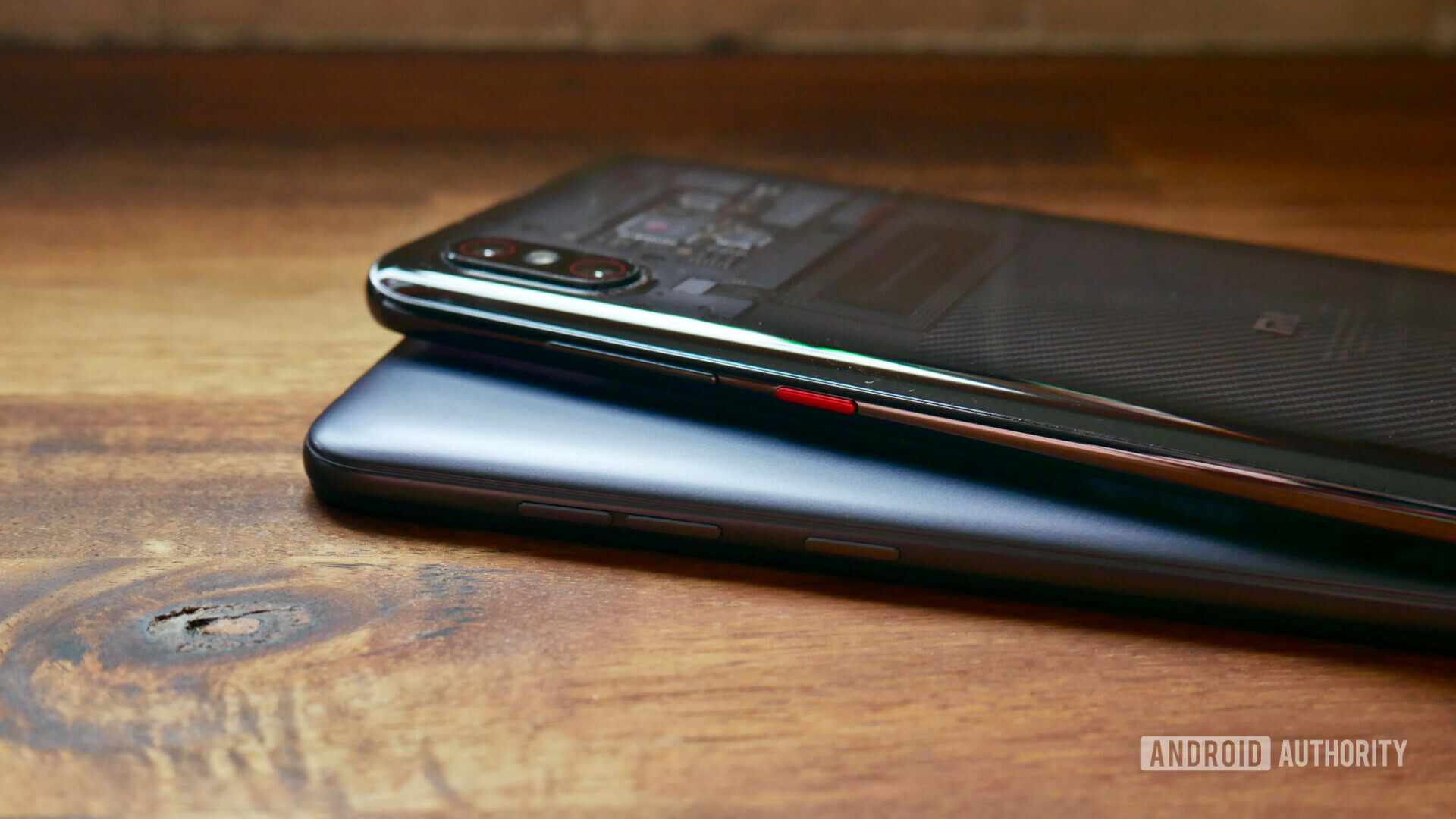
Despite the similarities between the two phones we’ve observed so far, the key differences in the feature list and hardware for each device suggests a fundamentally different approach from both the Mi and POCOphone teams.
The Mi 8 Pro’s flashiest selling point is its Goodix in-display fingerprint sensor. I wasn’t particularly kind to the sensor in my review and I stand by every word. A 40 percent success rate is well below the acceptable standard for such a commonly used feature. The POCOphone F1’s rear sensor, meanwhile, is faster, more reliable, and nicely positioned at the bottom of the dual camera module.
Related: Qualcomm announces the world’s first 3D ultrasonic in-display fingerprint sensor
Both phones also support face unlock which works in almost any lighting conditions thanks to the two devices packing IR sensors, although only the Mi 8 Pro is based on 3D-sensing technology for extra security.
The Mi 8 Pro’s in-display fingerprint sensor also means Xiaomi likely had to cut down on battery size. The phone’s 3,000mAh cell averages around 5 hours screen-on time which isn’t great as far as battery life goes. Meanwhile, the POCOphone F1’s whopping 4,000mAh battery clocks in at up to 9 hours.
The POCOphone F1 also wins out in the audio stakes by virtue of including a 3.5mm headphone jack. As long as Bluetooth and USB-C headphones produce inferior results, any phone that opts to stand by the 3.5mm port is a win in our book. It’s a shame both phones only have stereo bottom-firing speakers, however.
If battery life, storage, and headphone jacks are your deal-breakers then the POCOphone F1 is easily the better option.
The Mi 8 Pro features 128GB of non-expandable ROM as standard. The global POCOphone F1 comes with either 64GB or 128GB ROM while also offering a microSD card slot for additional storage.
In addition, the POCOphone F1 features a liquid cooling system called LiquidCool that transfers heat from the processor to other parts of the phone to prevent overheating.
Unfortunately, neither phone comes with an IP rating or wireless charging. The latter is particularly baffling with the Mi 8 Pro considering it has a glass back.
Xiaomi Mi 8 Pro vs POCOphone F1: Camera
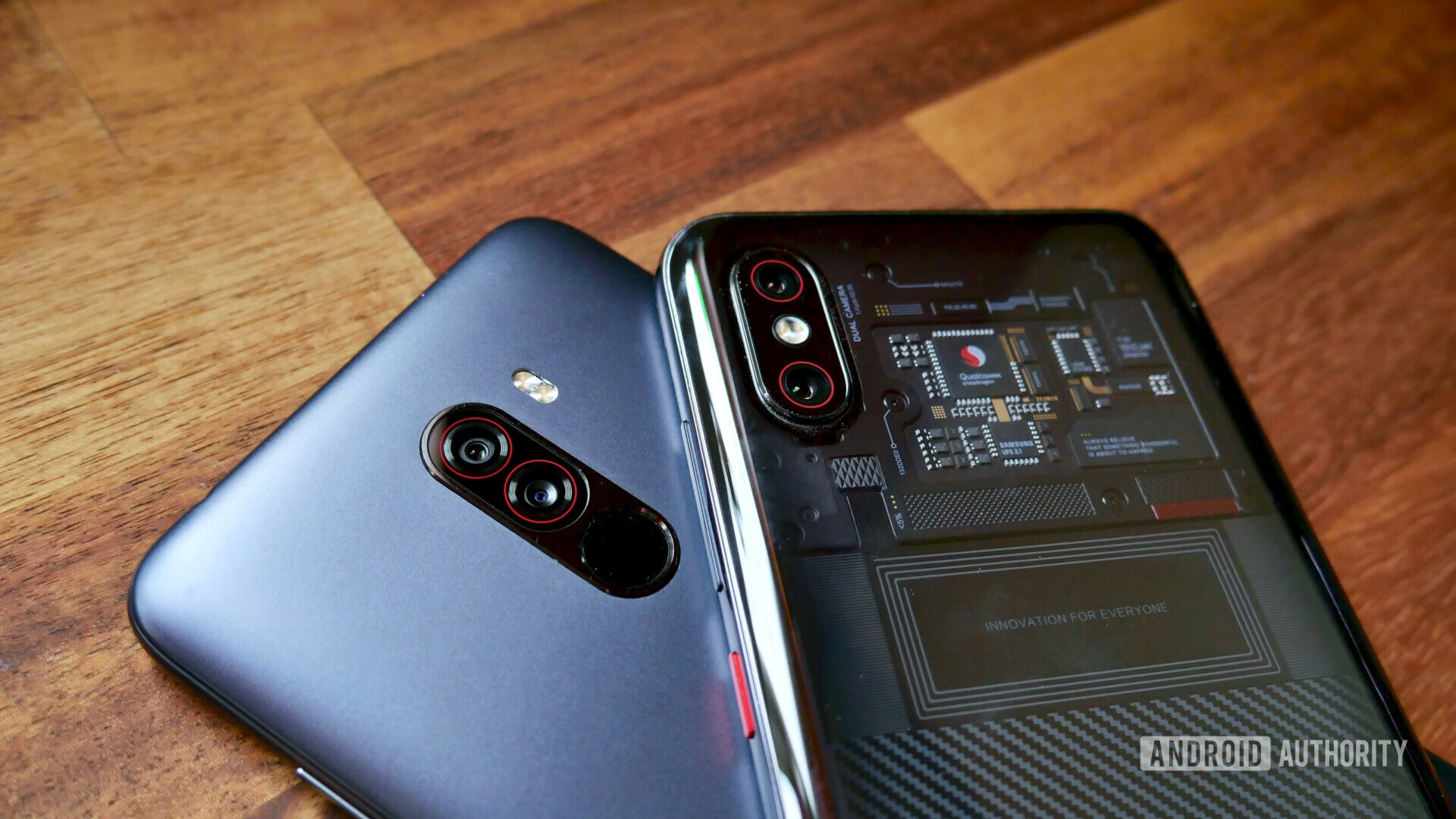
The POCOphone F1 features a dual-lens rear camera with a 12MP main sensor and a 5MP lens for depth sensing.
To be blunt: photography is not the POCOphone F1’s strong suit.
While it’s capable of taking good-to-great photos in the right conditions (read: outside), but any scene with even slightly lower light conditions can result in overexposed and/or oversaturated shots.
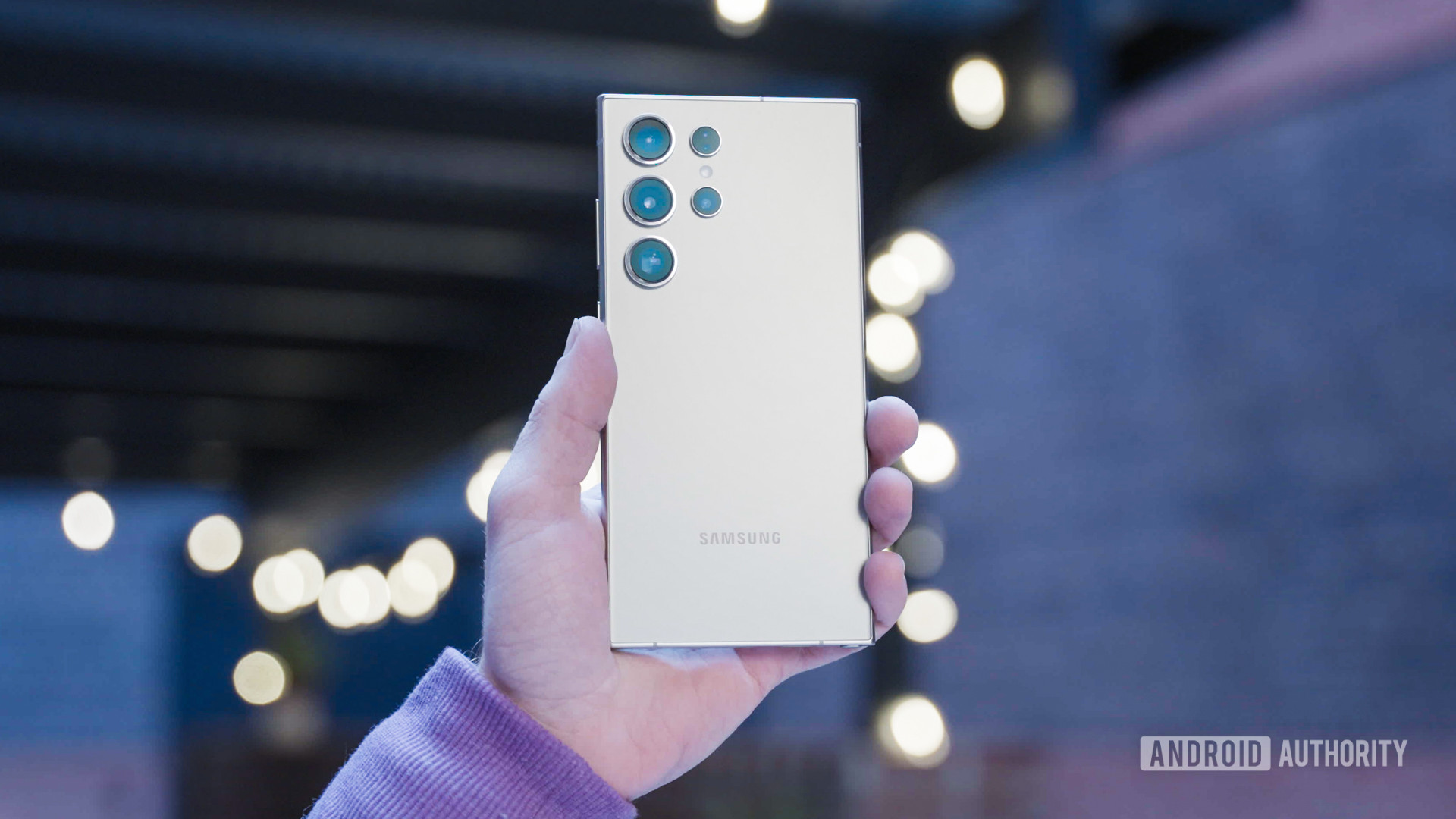
Conversely, the Mi 8 Pro’s 12MP main and 12MP telephoto lens combo consistently produces superb results in all but the worst lit conditions.
You can really see the difference between the two in the sample shot below of the big plush toy sat in my office chair with the lights off and curtains partially closed. This was taken in mid-afternoon and the results get even worse for the POCOphone F1 at night.
The two phones have an almost identical camera app and both offer AI scene recognition, but only the Mi 8 Pro truly lives up to Xiaomi’s trademark bluster in the camera stakes.
As for the front cameras, the two phones feature 20MP sensors which utilize pixel binning to reduce noise and produce decent, if unspectacular, selfies.
Xiaomi Mi 8 Pro vs POCOphone F1: Software
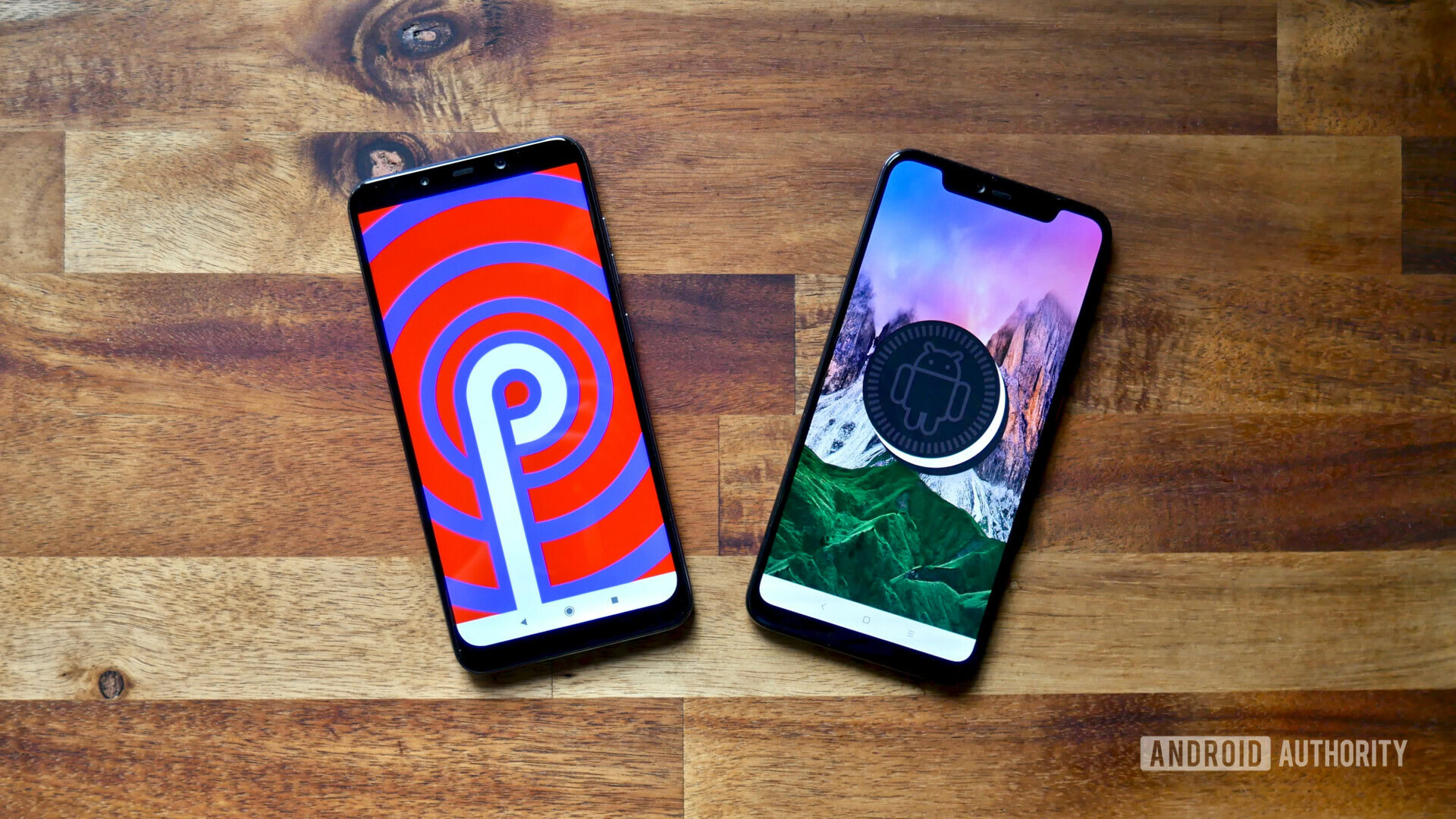
The Mi 8 Pro and POCOphone F1 run Android 8.1 Oreo and MIUI 9 out-of-the-box. As of writing this post, both phones can be updated to MIUI 10, but only the POCOphone F1 has received a sweet slice of Android 9.0 Pie so far.
Even without Pie, MIUI 10 does a lot to replicate the experience of stock Android, albeit with a smattering of Xiaomi apps (some of which are unnecessary duplicates) and a softer, more muted color palette.
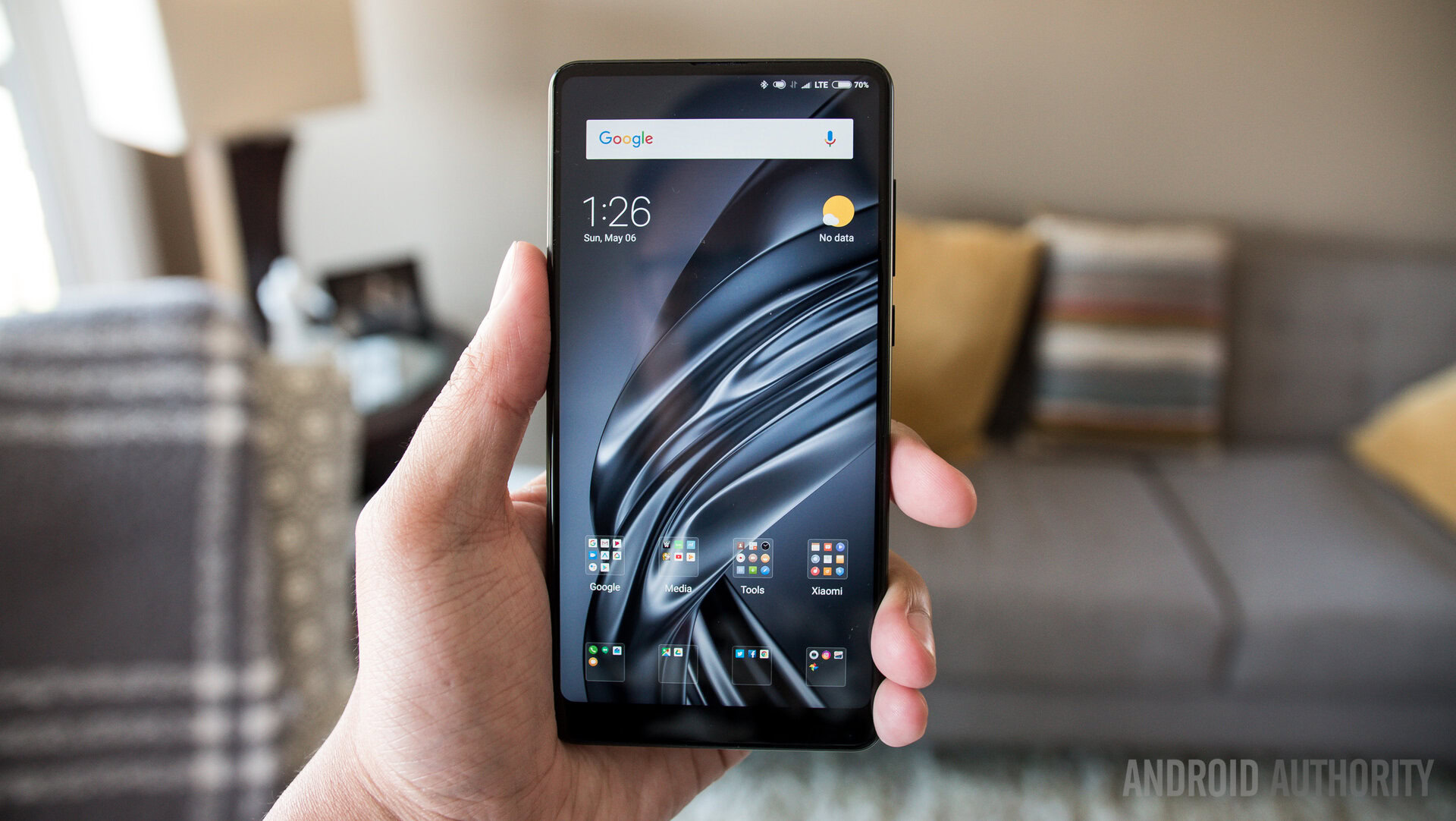
What you get with the POCOphone F1 isn’t exactly the regular MIUI experience, however, as Xiaomi has slapped a new launcher on top of MIUI called POCO Launcher.
The differences are largely negligible, although POCO Launcher’s app shortcuts and five app rows (versus the Mi 8 Pro’s four) give it the edge for me. The POCO Launcher also has an optional app drawer, while regular MIUI 10 does not. Of course, you can always download the POCO Launcher from the Play Store if you fancy.
Generally though, whichever phone you choose will come with the best and worst that MIUI 10 has to offer… and the worst bits are really quite bad. That means no notification icons in the status bar, confusing menus, and the threat of ads showing up at any time.
Xiaomi Mi 8 Pro vs POCOphone F1: Specs
| Xiaomi Mi 8 Pro | Pocophone F1 | |
|---|---|---|
Display | Xiaomi Mi 8 Pro 6.21-inch AMOLED 2,248 x 1,080 resolution 18.7:9 screen ratio | Pocophone F1 6.18-inch IPS LCD 1080 x 2246 (Full HD+) |
SoC | Xiaomi Mi 8 Pro Qualcomm Snapdragon 845 Octa-core, up to 2.8Ghz | Pocophone F1 Qualcomm Snapdragon 845, Octa-core, up to 2.8Ghz, liquid cooled |
GPU | Xiaomi Mi 8 Pro Adreno 630 | Pocophone F1 Adreno 630 |
RAM | Xiaomi Mi 8 Pro 8GB LPDDR4X | Pocophone F1 6GB/8GB LPDDR4X |
Storage | Xiaomi Mi 8 Pro 128GB UFS | Pocophone F1 64GB/128GB/256GB UFS 2.1 Expandable |
Cameras | Xiaomi Mi 8 Pro Rear cameras Main: 12MP with 1.4 micron pixels, 4-axis OIS, f/1.8 aperture Secondary: 12MP telephoto with 1.0 micron pixels, f/2.4 aperture Video: 4K at 30fps, 1080p at 240/120/30fps, 720p at 240/30fps Front camera: 20MP with 1.8 micron pixels, f/2.0 aperture | Pocophone F1 Rear cameras Main: 12MP f/1.9, 1.4 micron pixels, Sony IMX363 Secondary: 5MP Front: 20MP f/2.0, 1.8 micron pixels via pixel binning |
Audio | Xiaomi Mi 8 Pro Bottom-firing speaker USB Type-C No 3.5mm jack | Pocophone F1 Bottom-firing speaker 3.5 mm audio jack aptX/aptX-HD/LDAC |
Battery | Xiaomi Mi 8 Pro 3,000mAh Non-removable Quick Charge 4+ | Pocophone F1 4,000 mAh Non-removable Quick Charge 3.0 |
Facial recognition | Xiaomi Mi 8 Pro 3D facial recognition (via OTA) | Pocophone F1 2D face unlock |
Sensors | Xiaomi Mi 8 Pro Goodix In-display fingerprint sensor Accelerometer Gyroscope Proximity Ambient Light Electronic Compass Barometer | Pocophone F1 Fingerprint (rear mounted) IR illuminator and IR camera for Face Unlock |
Network | Xiaomi Mi 8 Pro GSM: B2/B3/B5/B8 CDMA: 1X/EVDO BC0 WCDMA: B1/B2/B4/B5/B8 TD-SCDMA: B34/B39 TD-LTE: B34/B38/B39/B40/B41 (120MHz) FDD-LTE: B1/B2/B3/B4/B5/B7/B8/B12/B17/B20 LTE B41 4 antenna technology supporting 4x4 MIMO | Pocophone F1 GSM 900/1800 UMTS band 1/8 LTE band 1/3/7/8/20/38/40 |
Connectivity | Xiaomi Mi 8 Pro Wi-Fi: 2x2 MIMO, 802.11 a/b/g/n/ac, 2.4G/5G Bluetooth 5.0 AptX/AptX-HD support NFC Dual frequency GPS (GPS L1+L5, Galileo E1+E5a, QZSS L1+L5, GLONASS L1, Beidu B1) | Pocophone F1 USB Type-C Wi-Fi 802.11 a/b/g/n/ac, Dual-Band, Wi-Fi Hotspot, Wi-Fi Direct |
SIM | Xiaomi Mi 8 Pro Dual nano-SIM | Pocophone F1 Dual-SIM, dual 4G standby |
Software | Xiaomi Mi 8 Pro Android 8.1 Oreo MIUI 10 | Pocophone F1 Android 9.0 Pie, MIUI 10 |
Dimensions and weight | Xiaomi Mi 8 Pro 154.9 x 74.8 x 7.6mm 177g | Pocophone F1 155.5 x 75.3 x 8.8mm 182g |
Colors | Xiaomi Mi 8 Pro Transparent Titanium | Pocophone F1 Steel Blue, Graphite Black |
Xiaomi Mi 8 Pro vs POCOphone F1: Price and availability
The Xiaomi Mi 8 Pro is available in the U.K. priced at 499 GBP (~$634) and selected European countries where it retails for 599 euros. The POCOphone F1 (64GB) is priced at 329 GBP in the U.K. (~$415) and 329 euros in selected European countries.
Wrapping up
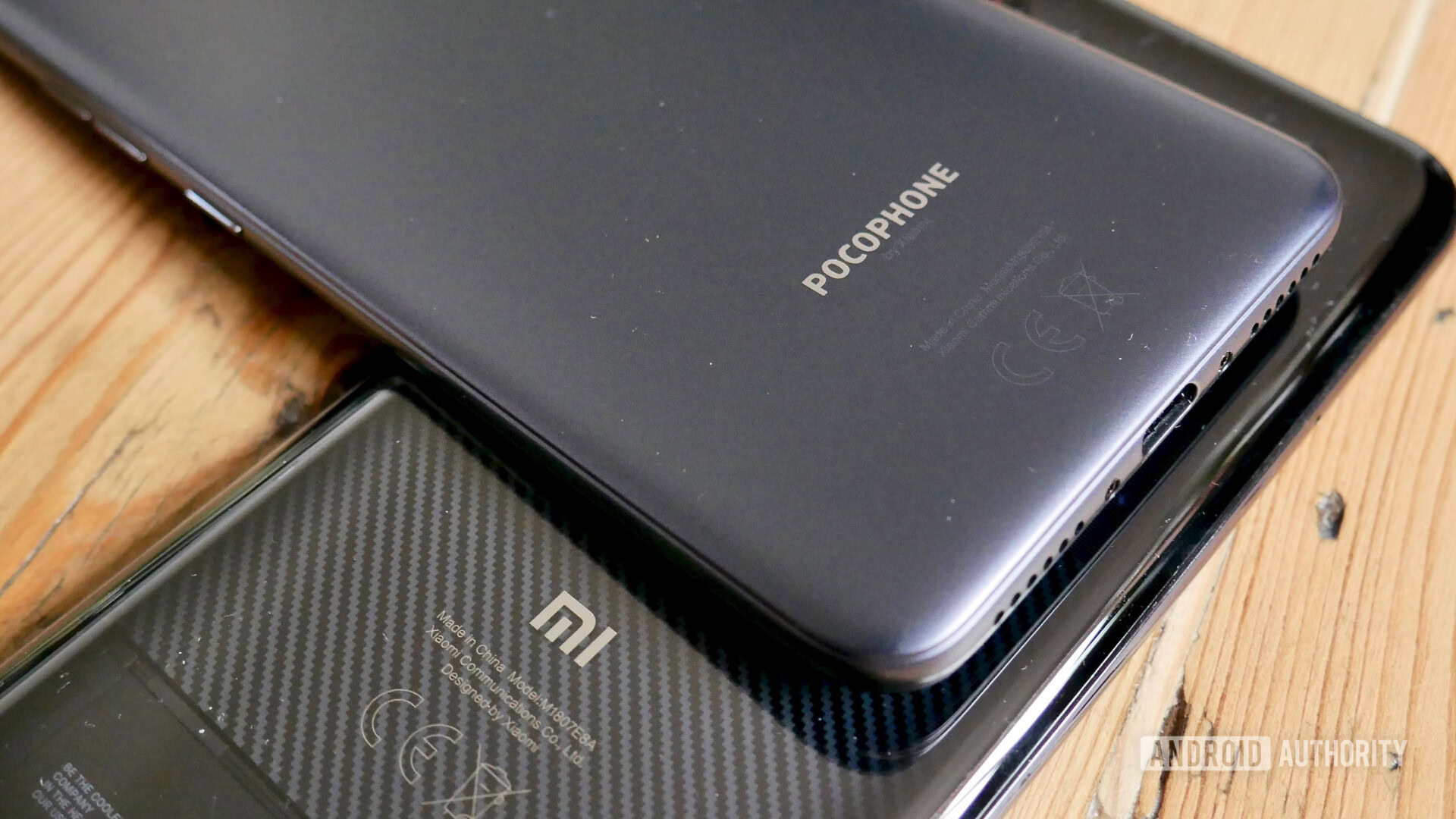
The Xiaomi Mi 8 Pro vs POCOphone F1 conundrum mostly comes down to how much you value style over substance. The Mi 8 Pro is clearly more aesthetically pleasing and premium-looking, but it’s worth remembering that beauty is only skin deep.
For all its bland chunkiness, the POCOphone F1 packs the power of an elite Android flagship, not a budget handset.
If you want a phone that delivers the basics with no-frills, the POCOphone F1 is an absolute steal. For everyone else, the Mi 8 Pro just about earns its higher asking price.
That’s not to say the Mi 8 Pro doesn’t earn its higher price tag. Xiaomi has cut far less corners with its Mi 8 standard bearer, particularly in the camera department, which outmatches the POCOphone F1’s shooter at every turn.
However, if photography isn’t a major factor in your purchase, the POCOphone F1 will run for far longer thanks to its larger battery and under just as much duress with the Snapdragon 845 in tow.
If you want a phone that delivers the basics with no-frills, the POCOphone F1 is an absolute steal. For everyone else, the Mi 8 Pro just about earns its higher asking price and mostly matches the level of quality you’d expect from a phone priced closer to $800.
Which phone do you think represents better value for money? Let us know in the comments!